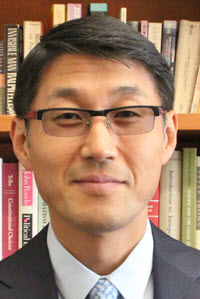Abstract
Excerpted From: Jerry Kang, Asians Used, Asians Lose: Strict Scrutiny from Internment to SFFA , 113 California Law Review 975 (June, 2025) (101 Footnotes) (Full Document)
 In Students for Fair Admissions, Inc. v. President & Fellows of Harvard College (SFFA), the Supreme Court ended race-conscious affirmative action in higher education as we knew it. The organization that successfully brought suit, Students for Fair Admission (SFFA), is hardly an Asian American civil rights organization. Instead, it is an entity created by Ed Blum, who has a long history of challenging affirmative action programs. Nevertheless, SFFA specifically foregrounded the claim that Asian American applicants were treated worse than similarly situated Whites in the admissions process. As such, SFFA seemed to be fighting what looked like straight-forward, old-school race discrimination: worse treatment of a racial minority (Asians) as compared to the racial majority (Whites). But after a two week trial, the district court rejected that allegation and found no such discrimination. That finding was subsequently affirmed by the First Circuit Court of Appeals. In short, SFFA lost on the facts. But at the Supreme Court, they won a far bigger prize, not on the facts but on the law: the end of affirmative action as we know it.
In Students for Fair Admissions, Inc. v. President & Fellows of Harvard College (SFFA), the Supreme Court ended race-conscious affirmative action in higher education as we knew it. The organization that successfully brought suit, Students for Fair Admission (SFFA), is hardly an Asian American civil rights organization. Instead, it is an entity created by Ed Blum, who has a long history of challenging affirmative action programs. Nevertheless, SFFA specifically foregrounded the claim that Asian American applicants were treated worse than similarly situated Whites in the admissions process. As such, SFFA seemed to be fighting what looked like straight-forward, old-school race discrimination: worse treatment of a racial minority (Asians) as compared to the racial majority (Whites). But after a two week trial, the district court rejected that allegation and found no such discrimination. That finding was subsequently affirmed by the First Circuit Court of Appeals. In short, SFFA lost on the facts. But at the Supreme Court, they won a far bigger prize, not on the facts but on the law: the end of affirmative action as we know it.
Many scholars, such as Vinay Harpalani and Jonathan Feingold, have called this a “bait-and-switch.” SFFA's bait, which would draw attention, sympathy, and support, was stopping discrimination against Asian Americans. The switch was that SFFA's litigation ended up doing something quite different--namely, ending affirmative action for underrepresented minorities. Superficially, these may appear to be the same thing. But that assumes that discrimination against Asian Americans is equivalent to affirmative action for underrepresented minorities. As I explain below, that assumption conflates “negative action” against Asians (i.e., Asians being treated worse than similarly situated Whites) with affirmative action granted to others. Unfortunately, ending affirmative action for others does not stop negative action against Asian Americans.
This Essay extends the bait-and-switch critique by connecting SFFA to two earlier moments in equal protection history. The first is Japanese American internment during World War II and the Supreme Court's creation of the strict scrutiny doctrine. The second is the affirmative action wars that occurred in the 1980s and 1990s, which resulted in the current doctrine requiring strict scrutiny even for “benign” affirmative action. In all three moments-- internment, affirmative action wars, and SFFA--Asian Americans were curiously exploited. A pithy refrain captures my thesis: Asians used, Asians lose.
[. . .]
“Asians used, Asians lose” is this Essay's anthem. First, in the 1940s, we were used as formwork to pour the concrete of strict scrutiny, even as we were caged. Second, in the 1990s, the Court invoked wartime internment to justify strict scrutiny even for affirmative action programs. We were told that we needed strict scrutiny as a skeptical sensor to detect covert racism, so that we would never again repeat the internment. However, strict scrutiny never actually functioned as some epistemological probe. Instead, it just erected a substantive bar, a hyper-justification requirement that sharply delimited race-conscious remedies. Compared to what was promised, we received a far cruder machine better suited for formalistic colorblindness than a genuine search for racial prejudice, stereotyping, or even selective solicitude. Finally, in the 2020s, Blum used Asians to mobilize support for the SFFA litigation. SFFA explicitly called out worse treatment of Asian Americans compared to otherwise identical Whites in higher education admissions. But the lower courts found no such discrimination on the facts. On this there can be no dispute: Asians lost. And the Supreme Court used the litigation as a vehicle--not to vindicate Asians but to effectively end the diversity rationale for affirmative action in higher education.
For Asian Americans who care mostly about their self-interest, the end of affirmative action may provide some benefit in marginally increased chances of admission. But that benefit is slight. Remember that the most significant factors decreasing Asian American admissions have nothing to do with affirmative action granted to others. Instead, it is caused by a form of negative action created by preferences for legacies, athletes, geographies, and subjective personal ratings. And ending affirmative action does nothing to mitigate these factors.
In my view, this small increase in admissions probability is not worth the much larger social cost of ending affirmative action in higher education. But justifying this claim systematically is beyond the scope of this Essay. My only ask is that when we have that conversation, we do so without confusion or disinformation about what was promised by Blum and SFFA when the lawsuit started. Asian Americans should understand what was actually delivered.
Ralph and Shirley Shapiro Distinguished Professor of Law and (by courtesy) Asian American Studies at UCLA School of Law.


